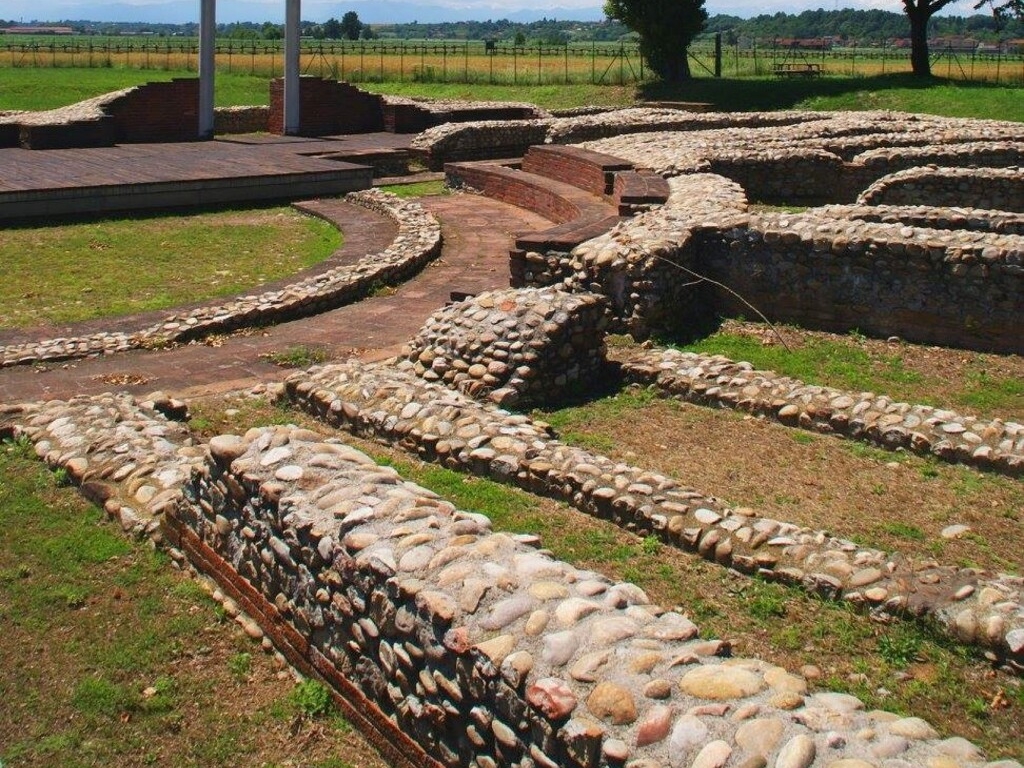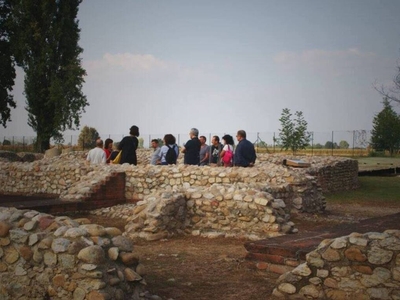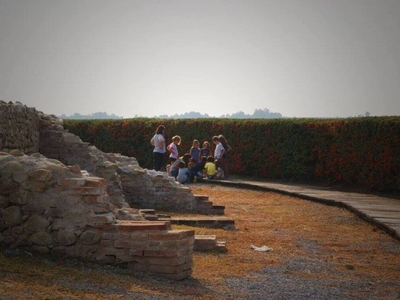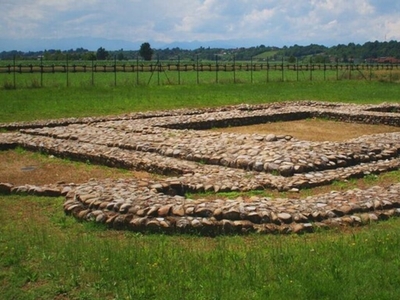Not far from the town centre of Bene Vagienna is one of the most important archaeological sites in the Piedmont region, the ancient Augusta Bagiennorum. Founded in Roman times in the 1st century BC, it was located in an area of strategic commercial importance for controlling the flow of goods passing through the Po Valley on their way to the sea or the Alpine passes.
Restored to light between the end of the 19th and the beginning of the 20th century, it is now possible to walk through the area thanks to didactic panels located along the almost 800-metre route, which, however, represents a minimal part of what was the original expansion of the site.
The Roman Theatre represents the most conspicuous part of the finds, although today only the original foundations are still visible, thanks also to the heavy restoration it underwent in the 1950s.
The ancient site also had an elliptical Amphitheatre, used for gladiator shows and located outside the urban perimeter, along one of the access roads to the city.
Since the beginning of the 20th century, many of the artefacts and findings, especially those from the first excavations, have been housed in the Civic Archaeological Museum, in its headquarters at Palazzo Lucerna di Rorà in the historic centre of Bene Vagienna.
The Museum was set up at the behest of scholars Assandria and Vacchetta, who in those very years were completing excavations at the site of Augusta Bagiennorum and were thus able to preserve the numerous finds that were coming to light. The layout of the rooms still reflects the criteria of nineteenth-century museography, thus preserving the historical memory even after a recent restoration.
From the outset, the museum was housed in the eighteenth-century Palazzo Lucerna di Rorà, in the historic centre of Bene Vagienna, occupying the upper floor accessed through a large hall designed by Filippo Juvarra. The palace was remodelled between the 17th and 18th centuries on a pre-existing medieval building, while at the beginning of the 19th century many rooms were renovated under the direction of Pelagi and decorated with motifs reminiscent of Racconigi Castle. Over the years it served various functions until the beginning of the 20th century when it became the seat of the Museum.
Since 2003 the Archea Centre has also been active, a project dedicated to students and others, which allows visitors to spend a day like real ancient inhabitants of the place. Through interactive workshops it is possible to relive experiences far removed in time while learning and having fun.
INFO, TIMETABLES AND PRICES
Guided tours available every day by appointment
Guided visit to the Archaeological Site only or to the Civic Museum only or to Casa Rovera only: 2€ per person for groups of more than 10 people; 20€ total for groups of less than 10 people
Guided visit to 2 of the 3 routes: 4€ per person for groups of more than 10 people; 40€ total for groups of less than 10 people
Guided tour of the 3 routes + Chiesa dei Disciplinati Bianchi: 6€ per person for groups of more than 10 people; 60€ total for groups of less than 10 people.
For more information, click here.




